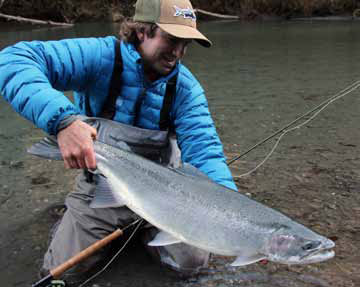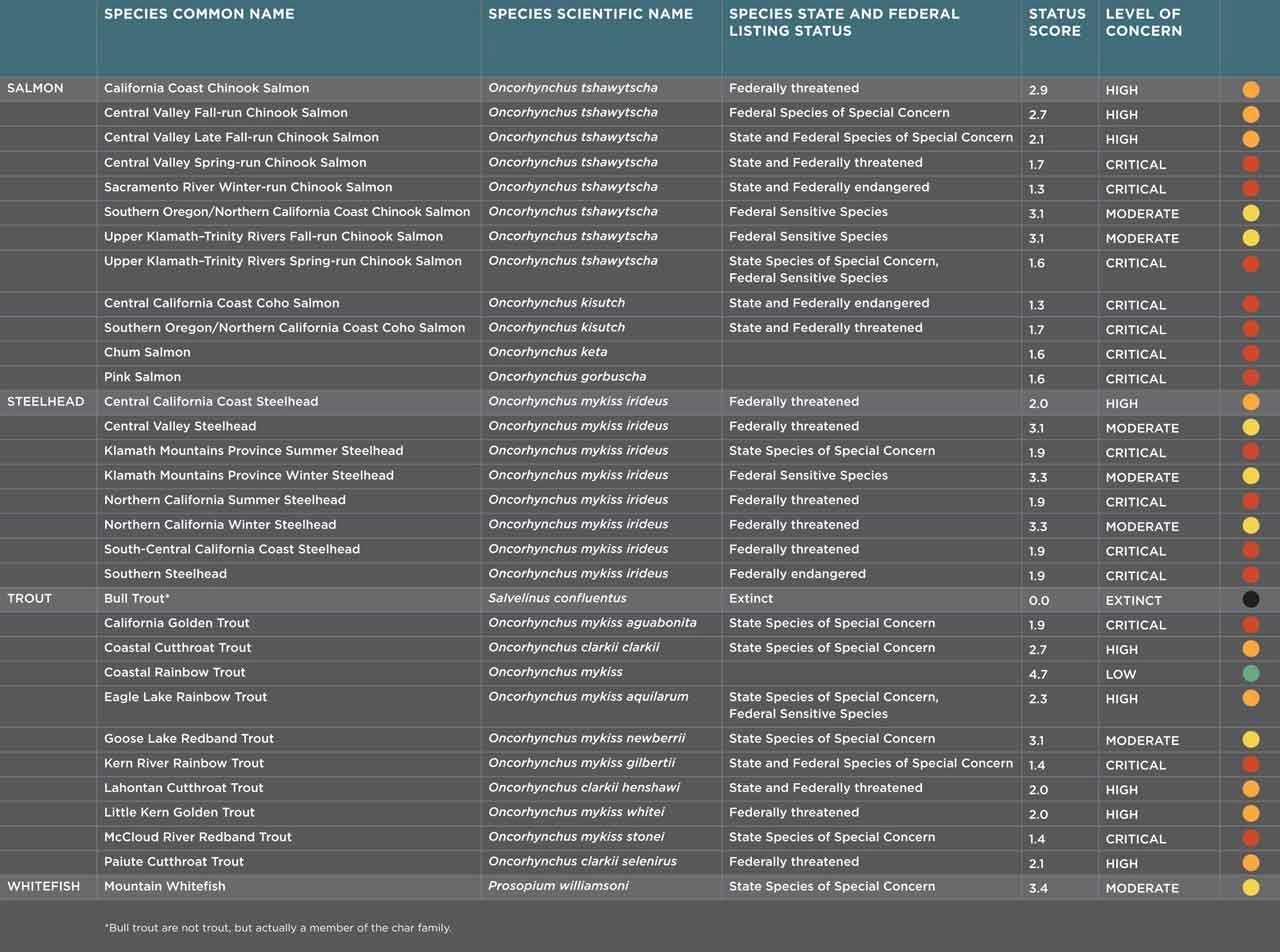Restoration for the Benefit of Salmonids
The Redwood Creek flood control project was completed by the Army Corps of Engineers in 1968 to protect the community of Orick from floodwaters. Flood control levees were erected along the lower 3.5 miles of Redwood Creek, disconnecting the creek from its estuary and off-channel over-wintering rearing habitat. Levee construction caused major physical changes to the lower reach of Redwood Creek and its estuary. The estuary volume has been reduced by approximately half of its pre-levee size due to sediment deposition, and this fish habitat and water quality is severely impaired. Restoration of the Redwood Creek estuary would provide substantial benefit for the recovery of estuarine fish species including three threatened salmonid species — coho salmon, Chinook salmon, and steelhead. Estuary restoration would also complement other large-scale restoration efforts conducted within watershed.
Conservation Goal
- Complementing decades-long efforts by Redwood State and National Park to restore salmon and steelhead habitat throughout the watershed, restore and revitalize Redwood Creek’s lower floodplain and estuary to make this magnificent watershed once again whole, and thus stand out as a regional salmon stronghold.
What We Will Accomplish in 2013-14
- Participate in a peer review committee to advise Humboldt County and Redwood National and State Parks on desired ecological conditions and restoration goals and objectives (and steps needed to accomplish these goals).
Key Partners: Redwood National and State Parks, Humboldt County Public Works Department, Redwood Creek Watershed Group and Pacific Coast Fish, Wildlife and Wetlands Restoration Association, Northern Hydrology and Engineering, Stillwater Sciences, Northcoast Regional Land Trust, State Coastal Conservancy

















 Dams block access to historical spawning and rearing habitats. Downstream, dams alter the timing, frequency, duration, magnitude, and rate of change of flows decreasing habitat quality and survival.
Dams block access to historical spawning and rearing habitats. Downstream, dams alter the timing, frequency, duration, magnitude, and rate of change of flows decreasing habitat quality and survival.